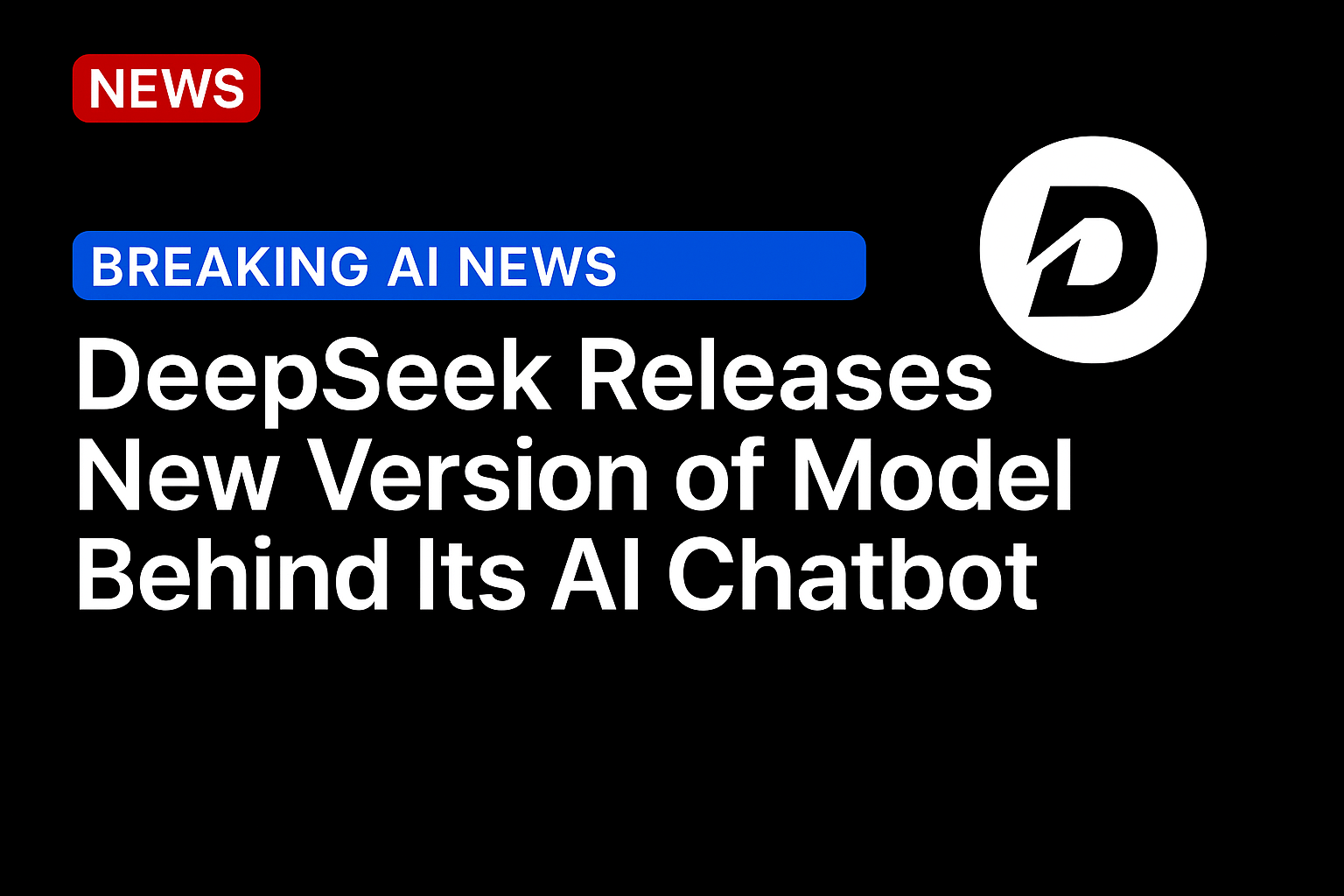Chinese artificial intelligence startup DeepSeek has released a new version of the open-source AI model behind its controversial chatbot.
Citing a post on DeepSeek’s official WeChat group, Bloomberg reported that DeepSeek V3.1 is ready for testing.
The new version has a longer context window, or space for prompting, of 128,000 tokens. That’s roughly 96,000 words or about two 200-page English novels.
DeepSeek’s V3 model caused a stir in January when the startup claimed it only cost $5.6 million to train using about 2,000 of slower Nvidia chips.
That’s far cheaper than the millions it took to train frontier models from OpenAI, Google, Anthropic and others. The news wiped $600 billion of market value from Nvidia in one day. But governments soon banned the use of the DeepSeek chatbot out of concerns the data would be kept on Chinese servers.
While the startup didn’t share much more on WeChat, a post on Reddit said the latest version of the chatbot is “very, very verbose,” and also observed that the “r1 in the think button” has disappeared, indicating V3.1 could be a mixed reasoning model.
R1 is a reasoning model that DeepSeek also developed. It is offered through the three major U.S. hyperscalers AWS, Microsoft Azure and Google Cloud. The cloud providers have said the model is hosted locally so data would not be sent to China.
Developers are still waiting for R2, the next model release of R1, according to Bloomberg.
Read also: Remember DeepSeek? Many Adopt Its AI Models Despite Security Concerns
In the global AI race, only China is able to compete effectively with the U.S., Bloomberg reported. Chinese companies such as Alibaba, DeepSeek and Moonshot have developed AI models that have capabilities approaching the best ones in the U.S.
While the U.S. has banked on largely closed, proprietary AI models, China has pushed open-source models that generally are free to download and use. China is sacrificing short-term profits to ensure Chinese AI is adopted globally, according to Bloomberg. China’s 14th five-year blueprint for development, released in 2020, favored the open-source approach. Some Chinese artificial intelligence startup managers also believe the fastest way to enter new markets and compete with U.S. models is to offer open AI models.
Source: https://www.pymnts.com/




